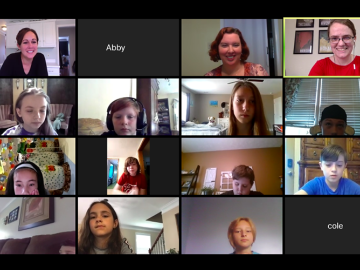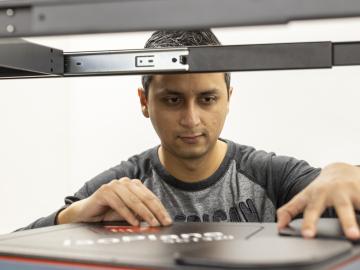
Filter News
Area of Research
- (-) Nuclear Science and Technology (12)
- (-) Supercomputing (79)
- Advanced Manufacturing (1)
- Biology and Environment (20)
- Building Technologies (1)
- Computational Biology (1)
- Computational Engineering (2)
- Computer Science (12)
- Electricity and Smart Grid (2)
- Energy Science (42)
- Fusion and Fission (17)
- Fusion Energy (11)
- Materials (17)
- Materials for Computing (6)
- Mathematics (1)
- National Security (15)
- Neutron Science (8)
- Quantum information Science (7)
- Sensors and Controls (1)
News Type
News Topics
- (-) Computer Science (62)
- (-) Exascale Computing (17)
- (-) Fusion (8)
- (-) Grid (1)
- (-) Molten Salt (4)
- (-) Quantum Science (14)
- 3-D Printing/Advanced Manufacturing (4)
- Advanced Reactors (9)
- Artificial Intelligence (23)
- Big Data (20)
- Bioenergy (3)
- Biology (7)
- Biomedical (12)
- Biotechnology (1)
- Buildings (2)
- Chemical Sciences (2)
- Coronavirus (9)
- Critical Materials (3)
- Cybersecurity (2)
- Energy Storage (2)
- Environment (18)
- Frontier (18)
- High-Performance Computing (28)
- Isotopes (4)
- Machine Learning (9)
- Materials (5)
- Materials Science (11)
- Mathematics (2)
- Microscopy (2)
- Nanotechnology (6)
- National Security (3)
- Neutron Science (8)
- Nuclear Energy (29)
- Physics (5)
- Polymers (2)
- Quantum Computing (15)
- Security (2)
- Simulation (13)
- Software (1)
- Space Exploration (5)
- Summit (28)
- Transportation (4)
Media Contacts

Scientists have tapped the immense power of the Summit supercomputer at Oak Ridge National Laboratory to comb through millions of medical journal articles to identify potential vaccines, drugs and effective measures that could suppress or stop the

With Tennessee schools online for the rest of the school year, researchers at ORNL are making remote learning more engaging by “Zooming” into virtual classrooms to tell students about their science and their work at a national laboratory.

In the 1960s, Oak Ridge National Laboratory's four-year Molten Salt Reactor Experiment tested the viability of liquid fuel reactors for commercial power generation. Results from that historic experiment recently became the basis for the first-ever molten salt reactor benchmark.

In the early 2000s, high-performance computing experts repurposed GPUs — common video game console components used to speed up image rendering and other time-consuming tasks

In the race to identify solutions to the COVID-19 pandemic, researchers at the Department of Energy’s Oak Ridge National Laboratory are joining the fight by applying expertise in computational science, advanced manufacturing, data science and neutron science.

As a teenager, Kat Royston had a lot of questions. Then an advanced-placement class in physics convinced her all the answers were out there.

The techniques Theodore Biewer and his colleagues are using to measure whether plasma has the right conditions to create fusion have been around awhile.

We have a data problem. Humanity is now generating more data than it can handle; more sensors, smartphones, and devices of all types are coming online every day and contributing to the ever-growing global dataset.

As the second-leading cause of death in the United States, cancer is a public health crisis that afflicts nearly one in two people during their lifetime.

A novel approach developed by scientists at ORNL can scan massive datasets of large-scale satellite images to more accurately map infrastructure – such as buildings and roads – in hours versus days.


